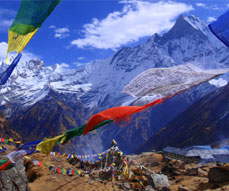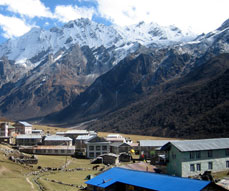That one in four visitors to Nepal go trekking should say something about the popularity of this activity in the Himalayan country. Most treks go through altitudes between 1,000 and 4,000 meters, while some popular parts reach over 5,000 meters. It’s not only the stunning landscapes on the trail that captivate the trekkers but also the people from different ethnic groups with whom they meet on the way – a rare opportunity to experience Nepal’s rich cultural diversity. And what better way than walking to see and experience it.
All trekkers are required to obtain the TIMS card before embarking on their trip. To trek in protected areas region one must acquire the entry permit by paying Entry Fees to enter the particular National Park or Protected Area. To get access to the areas restricted by the Government of Nepal, one must acquire the Trekking Permit to the area.

The Annapurna Region in north western Nepal has been touted as having the world’s best trekking routes. From the lake city of Pokhara, scenic view and popular treks lead to Jomsom, Annapurna Base Camp, Mustang, Manang and around the Annapurna mountains.

Langtang lies about 130 km north of the Kathmandu Valley close to the border with Tibet, China and it is Nepal’s first national park, and lies between the Himalayan range to the north, dominated by Langtang Lirung (7,245 m), the highest peak in the area, and smaller peaks to the south – Chimse Danda (ridge), Ganja La pass (5,122 m), Jugal Himal and Dorje Lakpa (6,989 m).